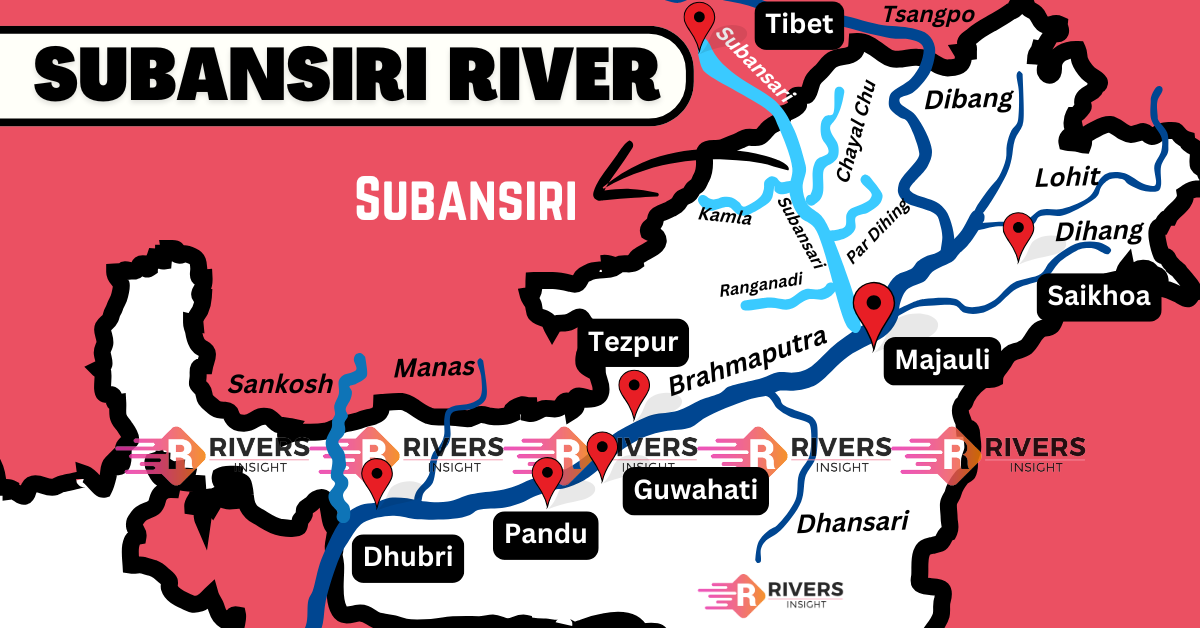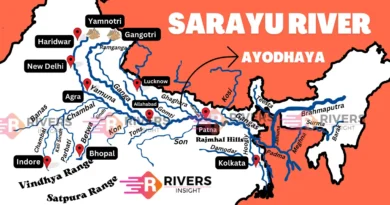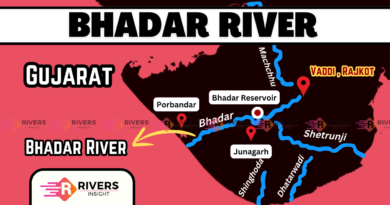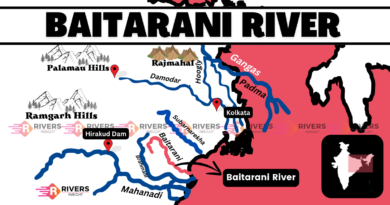Subansiri River: Map and Course
Subansiri River is a right-bank tributary of the Brahmaputra River, originating in Tibet and flowing through Arunachal Pradesh and Assam. It is a Trans-Himalayan and antecedent river, meaning it existed before the Himalayas rose and continued its course through the mountains. Moreover, the river is also called the “Gold River” because of the gold dust found in its waters. Its name comes from the Sanskrit word “Swarn,” which means gold.
Table of Contents
Origin and Course of Subansiri River
Subansiri River originates in the Tibetan Plateau, where it is formed by the confluence of three small streams: Lokong Chu, Chayal Chu, and Tsari Chu. It flows eastward in Tibet for about 170 km before turning south and entering India near Taksing in Arunachal Pradesh.
In Arunachal Pradesh, the Subansiri River flows east and southeast through the Miri Hills, carving deep gorges and creating a rugged landscape. After covering about 250 km in the Eastern Himalayas, it descends into the Assam Valley at Dulangmukh in Dhemaji district.
Here, it slows down and meanders through the plains for about 86 km, passing near Majuli—the world’s largest river island—before merging with the Brahmaputra River at Jamurighat in Lakhimpur district, Assam.
States and Districts Covered
The Subansiri River flows through:
- Tibet (China) – 170 km
- Arunachal Pradesh (India) – Upper Subansiri, Lower Subansiri, Kamle (250 km)
- Assam (India) – Dhemaji, Lakhimpur (86 km)
Drainage Basin
Subansiri River basin covers an area of approximately 35,771 square kilometers (13,800 sq mi), extending across Tibet, Arunachal Pradesh, and Assam. It is the largest tributary of the Brahmaputra River, contributing 7.92% of its total flow.
Geographical Distribution
The river basin is spread across three regions:
- Tibet (China): 10,345 sq. km
- Arunachal Pradesh (India): 21,066 sq. km
- Assam (India): 4,360 sq. km
Tributaries
The Subansiri River has several important tributaries that contribute to its flow. These tributaries originate from the Eastern Himalayas and surrounding regions, enriching the river system. They can be categorized into left-bank and right-bank tributaries.
1. Right-Bank Tributaries
- Kamla River – One of the major left-bank tributaries, it originates in Arunachal Pradesh and joins the Subansiri near Ziro.
- Ranganadi River – A significant tributary that contributes to hydroelectric projects in Arunachal Pradesh and Assam.
- Dikrong River – Flows into the Subansiri after passing through Arunachal Pradesh and Assam.
2. Left-Bank Tributaries
- Chayal Chu – One of the small streams that form the Subansiri River in Tibet.
- Tsari Chu – Another stream joining the Subansiri in its upper course.
- Par Dihing – A right-bank tributary that joins the river in Assam.
Lower Subansiri Hydro-Electric Project
The Lower Subansiri Hydro-Electric Project is an under-construction gravity dam on the Subansiri River. It is designed to harness the river’s hydropower potential, but the project has faced significant opposition from environmental groups and local communities.
Key Concerns and Opposition:
- The dam is seen as a threat to the ecosystem, particularly to aquatic life, including the endangered river dolphins.
- There are concerns about the displacement of local communities and the impact on their livelihoods.
- The possibility of seismic activity in the region raises safety concerns regarding the dam’s structural integrity.
So, this is all about the Subansiri River—its origin, course, tributaries, basin, and ongoing projects. If you have any queries, feedback, or additional insights, feel free to share them in the comments section below!




